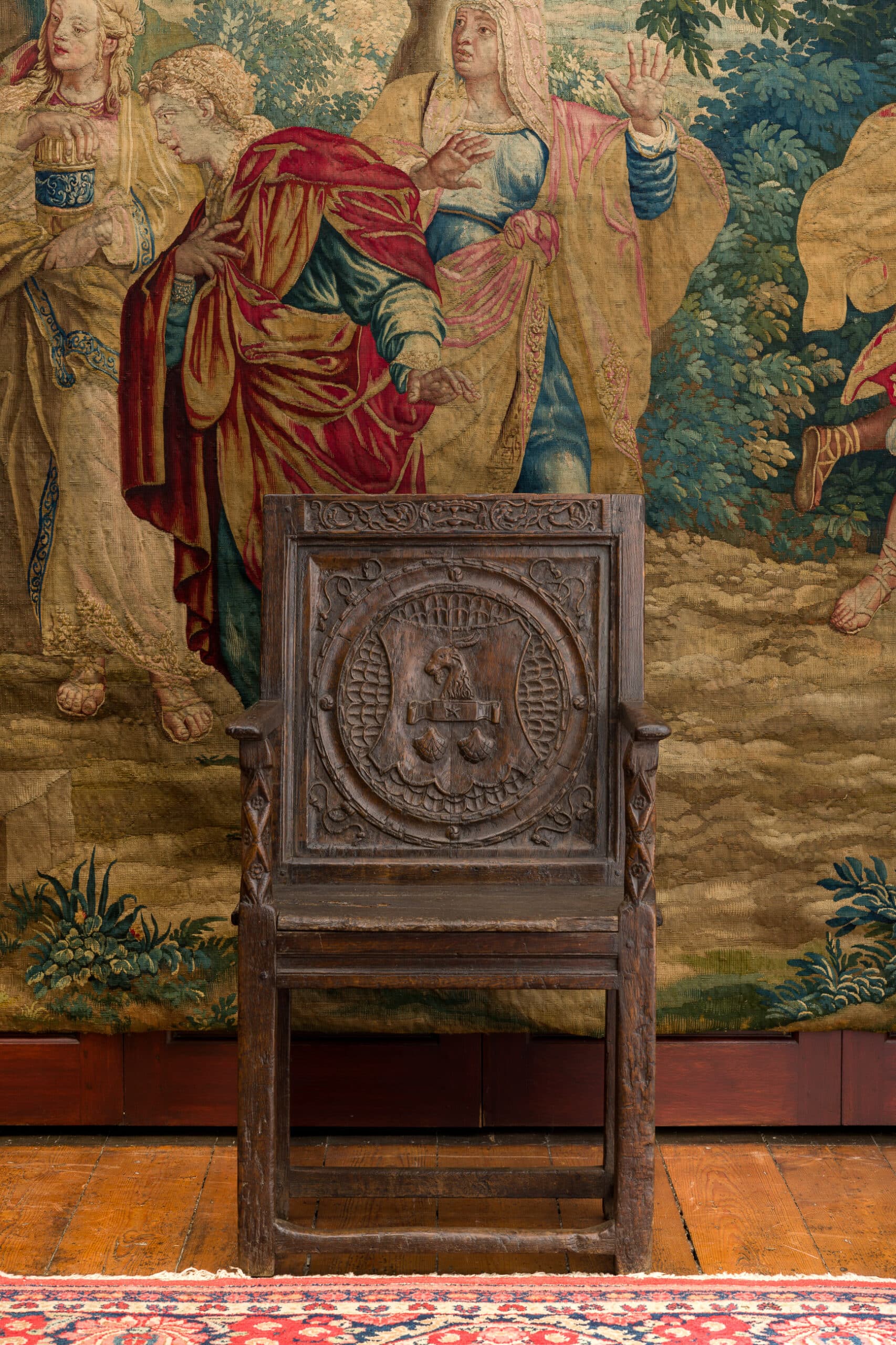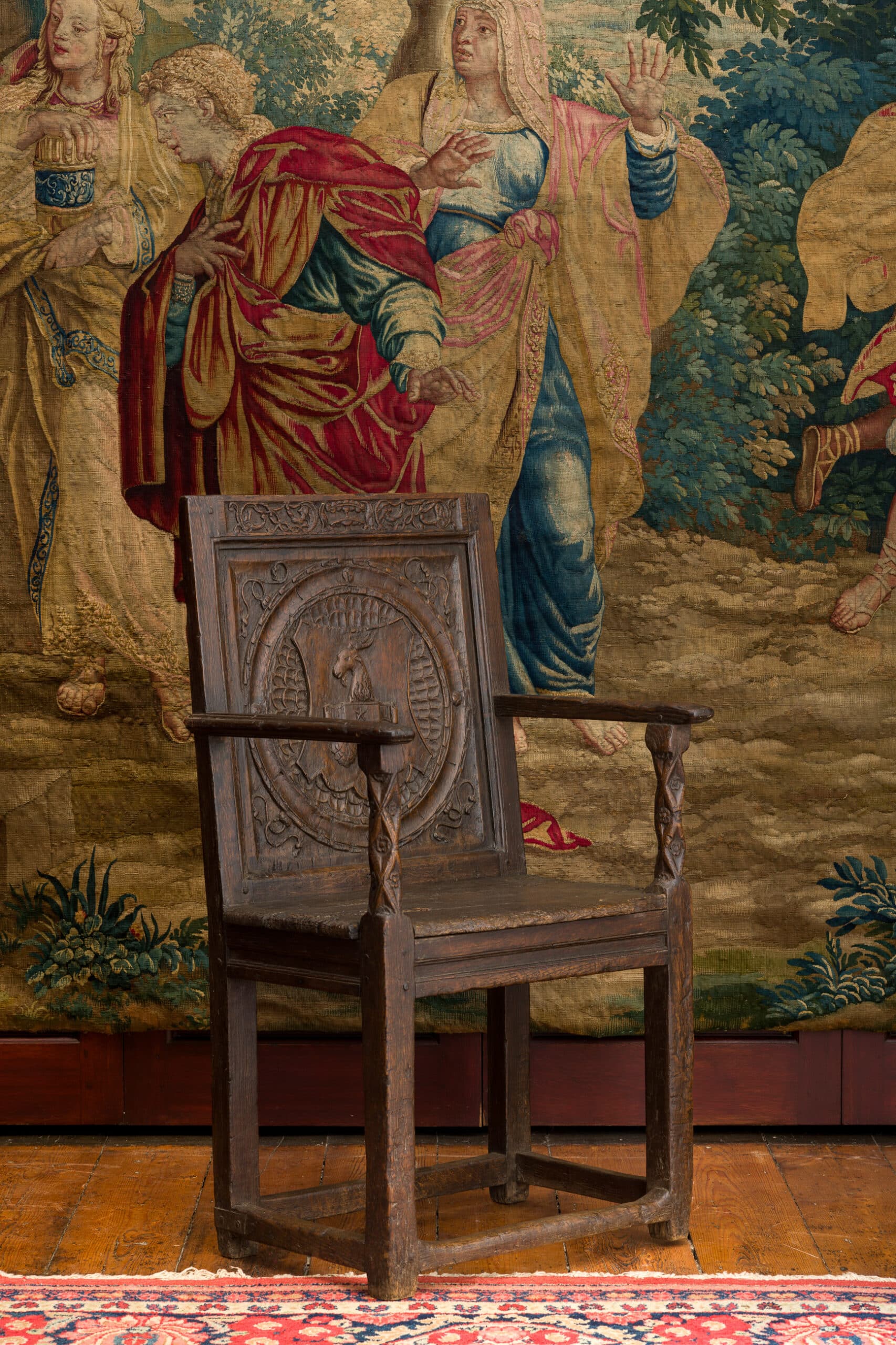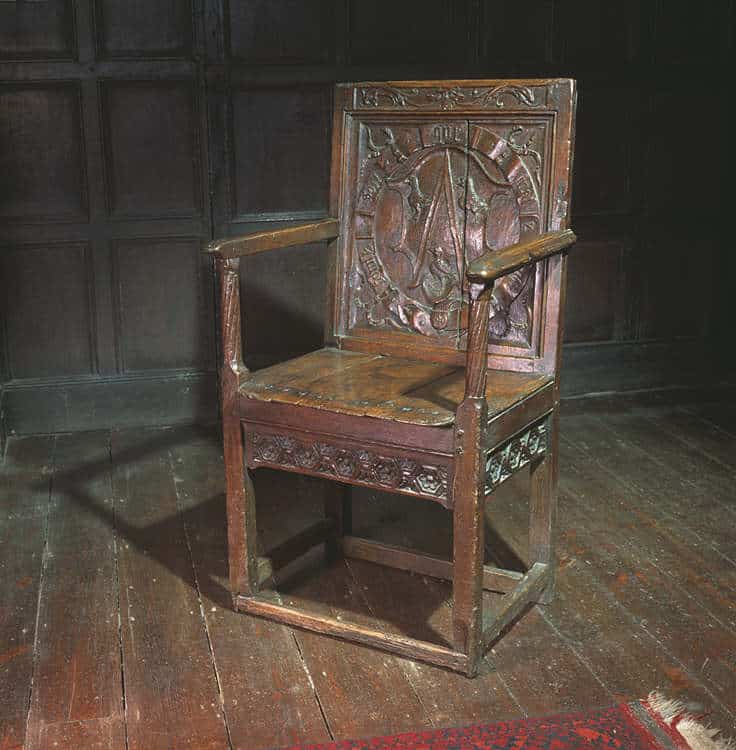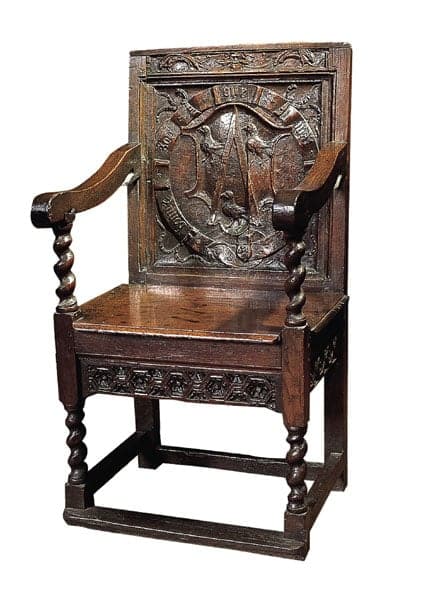Henry VIII oak carved armchair
1503 - 1527
England
W 22 3/4" × H 40 1/2" × D 18"
Stock # Marh2803
SOLD
Henry VIII oak carved armchair of high status, made for Sir Hugh Warham.
Research by Beacon Genealogical and Heraldic research:
The arms as carved upon this oak armchair dating to the early 16th Century circa 1503 – 1527 are those of the family of Warham. They may be blazoned as follows:
Arms: Gules a fess or between in chief a goat’s head erased argent horned of the second and in base three escallops two and one of the last [differenced on the fess with a mullet]
Given the evidence of both the dating and the carving of the Warham arms, especially with the use of the mullet as the cadency mark of a third son of the family, it was probably commissioned by Sir Hugh Warham (born circa 1456 died before 2nd December 1538), of Malsanger, near Church Oakley in the County of Southhampton, and of the Manor of Haling, near Croydon in the County of Surrey. Hugh was the third son of Robert Warham, of Malsanger aforesaid and his wife, Elizabeth Hampshire. It is stated that he married Maryan/Marion Colles/Coles (born 1460 died 1500) around the year 1476, at Denton in the County of Sussex, most probably in the Parish Church of St Leonard. Although there is a great deal of genealogical ambiguity found in some primary and secondary sources about relationships within the Warham family, I believe the hypothesis as outlined about is correct as far as the known evidence allows. Further there is found within the Parish Church of St Leonard, Church Oakley near to the Warham family seat at Malsanger several tombs and memorials to the family, one a table tomb set with the effigies of a knight in plate armour with his lady in the dress of the period lying beside him with the arms of Warham differenced with a mullet on the fess. Given the date of this tomb is stated to be around the period of the 1520’s and 1530’s, this period would mesh in well with Hugh’s life and death. There is, therefore, a presumption that this is the resting place of Hugh and his wife, Maryan. Also, outside the church over the arch of its the west doorway is set in the southern spandrel are found the arms of Warham once again charged with a mullet on the fess, so we may once again presume that these are the arms of Hugh. Hugh’s brother, William (born circa 1450 died 22nd August 1532), the eldest son of his parents was appointed by King Henry VII to be Archbishop of Canterbury (29th November 1503) and Lord Chancellor (1502 – 15). He remained as archbishop until his death in 1532. Prior to taking holy orders, William trained as a lawyer being educated at New College, Oxford, and thereafter practised and taught law both in London and Oxford. In London, William was a advocate in the Court of Arches, an ecclesiastical court covering the Province of Canterbury, whilst at Oxford, he was appointed as the principal or moderator of the civil law school there. In 1493, he was ordained as a Clerk in Holy Orders. His innate ability as a negotiator was noted by the Crown and he rapidly found favour at Court where his diplomatic skills came to the fore undertaking for both the Crown and church embassies and missions on the continent. He notably attended upon King Henry VIII at the Field of the Cloth of Gold (7th to 20th June 1520) at Balinghem where Henry met with King Francis I of France. At this historic and momentous event, William as Archbishop is said to have been accompanied with at least a personal retinue of ten horsemen and ten men on foot. These men were likely to be William’s bodyguard to ensure his safety on the journey from England to France. This begs the question was Hugh amongst this retinue? I believe it highly likely that he was, but, so saying, as part of a larger retinue of other household servants and camp followers to see to the archbishop’s needs whilst in France. Hugh as both William’s brother and a knight would most probably have had an honoured position within this retinue.
This armchair certainly follows the pattern/style of similar armorial armchairs thought to have been made by an individual working in the County of Carmarthenshire during early 16th Century. If this hypothesis is correct this armchair bearing the Warham arms, together with the two other examples known to exist and dating to this time that bear the arms of Rhys Ap Thomas (born 1449 died 1525) most probably came from this unknown craftsman’s workshop bearing in mind their design and workmanship alone.
The arms have been slightly bastardised by the omission of one of the escallops and the truncation of the fess which was most probably a consequence of the lack of heraldic knowledge by the craftsman concerned.
Highly important undocumented Tudor armchair



